Shipbuilding projects to equip the Royal Canadian Navy and the Canadian Coast Guard
Under the National Shipbuilding Strategy, we formed partnerships with two Canadian shipyards to renew Canada’s federal fleet of vessels. Learn about current projects to build large and small combat and non-combat vessels. Consult the status of projects to repair, refit, maintain and dispose of vessels and to explore interim solutions to meet current needs.
On this page
Large vessels
To build Canada’s large vessels fleet, we established long-term strategic relationships with two Canadian shipyards:
- Irving Shipbuilding Inc., based in Halifax, Nova Scotia, is building combat vessels for the Royal Canadian Navy
- Seaspan’s Vancouver Shipyards Co. Ltd., based in Vancouver, British Columbia, is building:
- non-combat vessels for the Canadian Coast Guard
- non-combat support ships for the Royal Canadian Navy
Combat vessels
Non-combat vessels
- Offshore Fisheries Science Vessels
- Offshore Oceanographic Science Vessel
- Joint Support Ships
- Polar Icebreaker
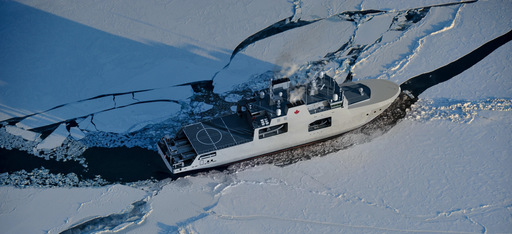
Arctic and Offshore Patrol Ships
These vessels will:
- conduct armed sea-borne surveillance in Canada's waters, including in the Arctic
- provide surveillance and support to other government departments
- enhance our ability to assert Canadian sovereignty
Project at a glance
- Project status: Construction in progress
- Number of vessels to be built: 5, with incentives to deliver 1 more
- Built at: Irving Shipbuilding Inc.
- Built for: Royal Canadian Navy
- Project budgetFootnote 1: $3.5 billionFootnote 2
- First vessel to be delivered: Late 2018
Progress of the project
Construction of the first vessel is well underway. In August 2016, the shipyard cut steel on the second vessel.
- Irving Shipbuilding Inc. videos: Watch the progress of the Offshore Patrol Ship construction
Next steps
Construction of the third vessel should begin in fall 2017.
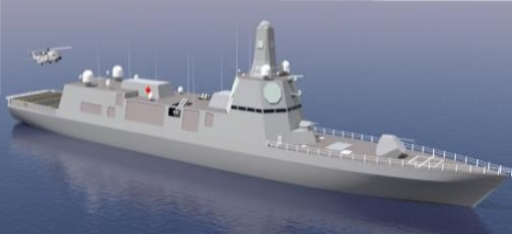
Canadian Surface Combatant
These vessels will:
- be capable of meeting multiple threats in both open oceans and complex coastal environments
- ensure that Canada continues to:
- monitor and defend its waters
- contribute significantly to international naval operations
- replace the Royal Canadian Navy's Iroquois-class destroyers and Halifax-class frigates
Project at a glance
- Project status: Competitive solicitation to select the warship design and design team
- Number of vessels to be built: 15
- Built at: Irving Shipbuilding Inc.
- Built for: Royal Canadian Navy
- Project budget: Under review
- Build contract to be awarded: Early 2020s
Progress of the project
In June 2016, we announced a streamlined procurement approach designed to deliver these vessels more quickly. The new approach will allow Canada to competitively select an existing warship design to modify to:
- meet the requirements of the Royal Canadian Navy
- enable the bidders to offer and incorporate Canadian systems and equipment into the warships
12 companies have been prequalified to participate in the procurement process. They were provided the request for proposal in October 2016. These companies are:
- Alion Science and Technology Corp.
- Atlas Elektronik GmbH
- BAE Systems Surface Ships Ltd.
- DCNS S.A.
- Fincantieri S.p.A. Naval Vessels Business Unit
- Lockheed Martin Canada
- Navantia S.A.
- Odense Maritime Technology
- Saab Australia Pty Ltd.
- Leonardo S.p.A.
- Thales Nederland B.V.
- ThyssenKrupp Marine System GmbH
Next steps
Once the bid period has closed, Canada and Irving Shipbuilding Inc. will evaluate the proposals. Selection of the design will be completed in 2018.
Latest announcements
- Establishment of a closing date for the Canadian Surface Combatant Request for Proposals (September 22, 2017)
- Further extension to the closing date for the Canadian Surface Combatant Requests for Proposals (June 5, 2017)
- Extension to the closing date for the Canadian Surface Combatant Requests for Proposals (February 16, 2017)
- Competitive process launched to select design of Canadian Surface Combatant (October 27, 2016)
- Government announces streamlined procurement approach to accelerate delivery of Canadian Surface Combatant vessels (June 13, 2016)
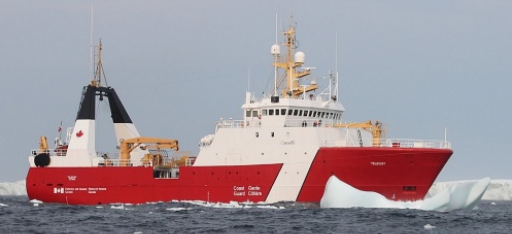
Offshore Fisheries Science Vessels
These vessels will:
- act as floating laboratories used to perform scientific research and ecosystem-based management
- contribute to Canada’s stewardship of fishery and ocean resources
- replace the aging Canadian Coast Guard Ship (CCGS) Teleost, CCGS Alfred Needler and CCGS W.E. Ricker on Canada's west and east coasts
Project at a glance
- Project status: Construction in progress
- Number of vessels to be built: 3
- Built at: Seaspan’s Vancouver Shipyards Co. Ltd.
- Built for: Canadian Coast Guard
- Project budget: $687 million
- First vessel to be delivered: Late 2017
Progress of the project
Construction of the first two ships is well underway, having begun in June 2015 and March 2016.
- Seaspan Shipyards videos: Watch the progress of the Offshore Fisheries Science Vessel construction
Next steps
Delivery of the first vessel will be in 2017.

Offshore Oceanographic Science Vessel
This vessel will:
- be capable of multi-tasking oceanographic, fishery, geological and hydrographic survey missions
- contribute directly to our understanding of the oceans and the impacts of climate change
- be outfitted for scientific research on ocean currents and on the seabed
- replace the CCGS Hudson currently operating on Canada's east coast
Project at a glance
- Project status: Definition phase
- Number of vessels to be built: 1
- Built at: Seaspan’s Vancouver Shipyards Co. Ltd.
- Project budget: Under review
- Build contract to be awarded: 2018
- Delivery date: 2020
Progress of the project
In February 2016, Canada awarded the contract for long lead items and material to Seaspan’s Vancouver Shipyards. This contract enables the shipyard to initiate early discussions with potential suppliers and to purchase the required material and equipment.
Next steps
Work will continue to finalize the design to a production-ready state.
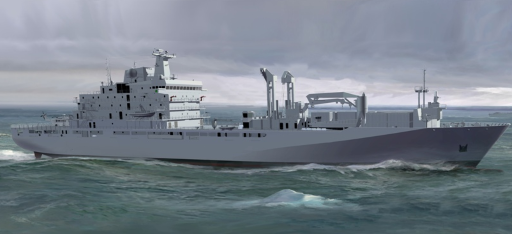
Joint Support Ships
These vessels will:
- increase the range and endurance of naval task groups
- this will permit the vessels to remain at sea for long periods of time without needing to return to port for replenishment
- provide a home base for:
- helicopter maintenance and operation
- a limited sealift capability
- support to operations ashore
- replace the Royal Canadian Navy's retired Protecteur-class auxiliary oiler replenishment vessels
Project at a glance
- Project status: Definition phase
- Number of vessels to be built: 2, with an option for 1 more
- Built at: Seaspan’s Vancouver Shipyards Co. Ltd.
- Built for: Royal Canadian Navy
- Project budget: under review
- First vessel to be delivered: 2021
Progress of the project
The initial design review work is nearly complete. We have begun competitively selecting the major equipment and systems to be installed in the first ship.
Next steps
With the awarding of the design and production engineering contract, the design work on this project will speed up in 2017. The advanced procurement of major equipment identified as long lead items and required for the construction phase will also take place during 2017.
Latest announcements
- Government takes final step before building Joint Support Ships (February 28, 2017)
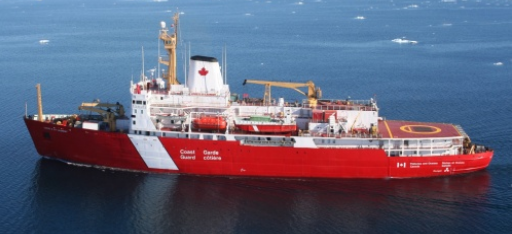
Polar Icebreaker
This vessel will:
- replace the CCGS Louis S. St-Laurent to become Canada’s largest and most capable icebreaker
- it will also be among the most powerful conventional icebreakers in the world
- will significantly enhance on-water capability in the Arctic year-round
- be able to consistently operate farther north, in more difficult ice conditions and for longer periods than any icebreaker we currently have
Project at a glance
- Project status: Contract design stage (completed)
- Number of vessels to be built: 1
- Built at: Seaspan’s Vancouver Shipyards Co. Ltd.
- Built for: Canadian Coast Guard
- Project budget: $1.3 billion
- Build contract to be awarded: 2021
- First vessel to be delivered: 2023
Progress of the project
Canada has committed to keeping the CCGS Louis S. St-Laurent in service at least until the delivery of the Polar Icebreaker. We have completed the necessary definition work and will move to the next phase once work on preceding projects has advanced.
Next phase
Negotiations of a construction engineering contract with Seaspan’s Vancouver Shipyards Co. Ltd. should occur in 2017.
Latest announcements
- Coast Guard seeks input on potential interim options for icebreaking and towing (November 17, 2016)
Small vessels
Small vessels are vessels with less than 1,000 tonnes of displacement. Canadian shipyards other than Irving Shipbuilding Inc. and Seaspan’s Vancouver Shipyards Co. Ltd. can compete for individual projects to build small vessels. This means important work can be spread throughout the shipbuilding sector.
The vessel projects are:
- Search and Rescue Lifeboats
- Channel Survey and Sounding Vessel
- Hydrographic Survey Vessels
- Coastal Research Vessel
Search and Rescue Lifeboats
These shore-stationed self-righting lifeboats will:
- provide key search and rescue services, including:
- conducting searches on water
- responding to marine distress calls
- providing assistance to disabled vessels
- operate up to 100 nautical miles from shore
- replace the Canadian Coast Guard’s existing vessels
Project at a glance
- Project status: Construction in progress
- Number of vessels to be built: 12, with options of up to 3 more
- Built at: Chantier Naval Forillon and Hike Metal Products
- Built for: Canadian Coast Guard
- Project budget: $89.2 million
- First vessel to be delivered: 2017
Progress of the project
Construction began at both shipyards in fall 2016.
Next steps
Delivery of the first vessel at both shipyards is expected for summer 2017.
Channel Survey and Sounding Vessel
These vessels will:
- replace the two current vessels operational in the St. Lawrence Seaway in the Central and Arctic regions
- these vessels have been in operation for an average of 37.5 years and are nearing the end of their lifespan
- provide private and commercial boaters with information about channel bottom conditions and water depth predictions
- provide the Canadian Coast Guard and other federal institutions the capability to monitor and observe marine and environmental conditions
Project at a glance
- Project status: Implementation phase
- Number of vessels to be built: 2
- Built at: Kanter Marine
- Built for: Canadian Coast Guard
- Project budget: $5.4 million
- First vessel to be delivered: early 2018
Progress of the project
The contract to build these vessels was awarded on October 31, 2016.
Next steps
Construction will start begin in early June 2017. The start of construction of the second vessel will begin in September 2017.
Hydrographic Survey Vessels
These vessels will:
- support the Department of Fisheries and Oceans’ hydrographic survey operations in Canada’s three-ocean coastal and internal waters
- be based in:
- Burlington, Ontario
- Mont-Joli, Quebec
- Dartmouth, Nova Scotia
- St. John’s, Newfoundland and Labrador
Project at a glance
- Project status: Implementation phase
- Number of vessels to be built: 7 vessels with trailers with options for 3 more vessels
- Built at: Kanter Marine
- Built for: Canadian Coast Guard
- Project budget: $5.5 million
- First vessel to be delivered: Delivered on December 15, 2016
Progress of the project
The 5 vessels were delivered by March 31, 2017. The tests and trials were successfully conducted on the sixth vessel on April 18, 2017. The last vessel is built and is currently being outfitted.
Next steps
The final inspection as well as the tests and trials of the last vessel are planned for the week of May 8, 2017. The last vessels are scheduled to be delivered during the week of May 22, 2017.
Coastal Research Vessel
This vessel will:
- support the Department of Fisheries and Oceans’ Great Lakes Science program through the Great Lakes Laboratory for Fisheries and Aquatic Science, primarily based in Burlington, Ontario
- be expected to operate throughout the entirety of the Great Lakes in both the offshore and near shore environments, while conducting both daylight and night-time operations between April and December each year
- tow arrays, trawl and conduct stationary point sampling of aquatic organisms
Project at a glance
- Project status: Implementation phase
- Number of vessels to be built: 1 aluminum vessel (11.2 to 11.6 metres) with twin inboard diesel jet engines
- Built at: Kanter Marine
- Built for: Canadian Coast Guard
- Project budget: $1.2 million
- First vessel to be delivered: Delivered in November 2016
Progress of the project
The work is completed.
Repair, refit and maintenance projects
Contracts for ship repair, refit and maintenance requirements are competed through publicly announced requests for proposals and invitations to tender. This work has benefitted numerous Canadian shipyards and suppliers across Canada.
Ongoing projects
- Canadian Coast Guard Ship Pierre Radisson
- Arctic and Offshore Patrol Ships and Joint Support Ships in-service support contract (AJISS)
Canadian Coast Guard Ship Pierre Radisson
The Canadian Coast Guard Ship (CCGS) Pierre Radisson is a medium icebreaker based in Quebec, Quebec. It normally operates in the St. Lawrence River, the Gulf of St. Lawrence and the Canadian Arctic. In winter, it breaks ice and escorts ships in the Gulf of St. Lawrence and on the St. Lawrence and Saguenay rivers. In summer, it travels to the Canadian Arctic to escort commercial ships, serve as a primary search and rescue unit and provide support to scientific missions when possible.
Project at a glance
- Repair at: Verreault Navigations
- Owned by: Canadian Coast Guard
- Contract value: $8.7 million (phase 1)
- Vessel to be return to service: End of January 2017
Progress of the project
Work started in early September 2016 for the implementation of phase 1, which includes:
- steel work
- maintenance and repairs on several tanks
- hull recoating
- reconditioning of the helicopter deck and hangar
- replacement of windows and portholes
- maintenance on propulsion and steering components as well as interior repairs
Repair and maintenance work was completed in January 2017 for the winter icebreaking operations.
Next steps
The implementation of phase 2 is scheduled between April and July 2017 in Quebec. A request for proposal has been released and the contract award is scheduled for February 2017.
Arctic and Offshore Patrol Ships and Joint Support Ships in-service support contract
We announced the launch of an open competition to provide in-service support, including refit, repair and maintenance and training, for both the Arctic Offshore Patrol Ships (AOPS) and Joint Support Ships (JSS). This combined contract approach is referred to as AOPS and JSS In-Service Support (AJISS).
Project at a glance
- Contract award: Fall 2017
- Awarded to: Pending approval
- Vessels to be serviced: Arctic and Offshore Patrol Ships (AOPS) and Joint Support Ships (JSS)
- Contract value: $5.2 billion (estimate)
- Duration of service contract: This contract will include an initial service period of 8 years, with options to extend services up to 35 years under an open and competitive process
Progress of the project
The request for proposal was issued July 8, 2016, and closed on November 8, 2016. On December 21, 2016, following the bid evaluation, the bidders were notified of the ranking of their bids in this evaluation. Negotiations with the highest ranked bidder started on January 18, 2017, and were completed successfully on February 8, 2017.
Next steps
Contract award.
Completed projects
- Canadian Coast Guard Ship Sipu Muin, Air Cushion Vehicle
- Her Majesty's Canadian Ship Haida
- Canadian Coast Guard Ship Henry Larsen
- Canadian Coast Guard Ship Earl Grey
Canadian Coast Guard Ship Sipu Muin
The Canadian Coast Guard Ship (CCGS) Sipu Muin is a hovercraft that routinely conducts icebreaking duties and maintenance of navigational aids out of its home port of Trois-Rivières, Quebec. The name Sipu Muin is Mi’kmaq, meaning “river bear.”
As part of its scheduled modernization, the vessel was in dry-dock at Réparations Navales et Industrielles Océan in Quebec, Quebec for 6 months ending in December 2016. The contract was valued at $3.1 million.
This modernization was part of the Canadian Coast Guard’s work to ensure the 19-year-old vessel will reach its intended operational life. The work included:
- repairs to the hull repair
- modifications to the pilot house
- upgrades to the electronic navigation suite
- replacement of the fuel bladders
- skirting
Her Majesty’s Canadian Ship Haida
Her Majesty’s Canadian Ship (HMCS) Haida is a Second World War vessel. It is located in Hamilton, Ontario and is designated as a level 1 heritage asset belonging to Parks Canada. This vessel is now a historic site offering guided tours.
A sole source contract valued at $2 million was negotiated with Heddle Marine in Hamilton. The contract is for the drydocking and repair of the vessel. The work, completed in December 2016, included:
- renewing the hull plate
- repairs to the deck plate
- coating the hull
- replacing the anodes
Canadian Coast Guard Ship Henry Larsen
The CCGS Henry Larsen is a medium icebreaker based in St. John’s, Newfoundland and Labrador. It was built in 1987, and normally operates in the St. Lawrence River, the Gulf of St. Lawrence and the Canadian Arctic.
The vessel life extension work was completed in June 2016, at Chantier Davie, based in Lévis, Quebec. The contract was valued at $16 million.
Canadian Coast Guard Ship Earl Grey
The CCGS Earl Grey is a medium endurance multi-tasked vessel based in Dartmouth, Nova Scotia. It was built in 1985, and normally operates in the Gulf of St. Lawrence and the Canadian Arctic.
The vessel life extension work was completed in March 2016 at Chantier Davie, based in Lévis, Quebec. The contract was valued at $14 million.
Future projects
Vessel refits
- CCGS Griffon
- CCGS Samuel Risley
- CCGS Limnos
- CCGS Private Robertson V.C.
- CCGS Corporal Teather C.V.
- CCGS Constable Carrière
Vessel life extensions
- CCGS Des Groseilliers, November 2017 to September 2018
- CCGS John P. Tully, October 2017 to May 2018
- CCGS Ann Harvey, July 2017 to November 2017
Consult the maintenance calendar for Canadian Coast Guard vessels
Vessel disposal
As the Royal Canadian Navy undergoes its most extensive peacetime modernization in history, it has announced the retirement (meaning, the disposal) of five vessels that have reached the end of their operational lives.
The vessels are:
- 2 Protecteur-class auxiliary oil replenishment ships: HMCS Protecteur and Preserver
- 3 Iroquois-class guided missile destroyers: HMCS Iroquois, Algonquin and Athabaskan
The disposal of these vessels has been anticipated for some time. It is a step toward:
- introducing new ships and capabilities to be delivered through the National Shipbuilding Strategy
- recognizing the Royal Canadian Navy’s commitment to using of public funds responsibly while maintaining Canada’s naval readiness
Their disposal is part of the Public Services and Procurement Canada marine portfolio and is not included directly under the National Shipbuilding Strategy.
Contracts for disposal requirements are competed through publicly announced requests for proposals.
Disposal of the former Her Majesty’s Canadian Ship Protecteur and Her Majesty’s Canadian Ship Algonquin
A contract valued at $39 million was awarded to R.J. MacIsaac Construction Ltd. in November 2015. The disposal is expected to be completed in summer 2017 for HMCS Protecteur and in fall 2017 for HMCS Algonquin.
Disposal of the former Her Majesty’s Canadian Ship Iroquois
A contract valued at $10.8 million was awarded to R.J. MacIsaac Construction Ltd. in October 2016. The disposal is expected to be completed by spring 2018.
Learn how this ship is impacting Canadians
Disposal of the former Her Majesty’s Canadian Ship Preserver and Her Majesty’s Canadian Ship Athabaskan
The former HMCS Preserver and Athabaskan are in various stages of preparation for disposal. A competitive solicitation process to award a contract for each vessel’s disposal will be released to coincide with the completion of disposal preparation work.
Interim requirements
While the strategy is a long-term plan to build vessels in Canada, there will be other requirements from time to time. As we identify requirements to support the Canadian Coast Guard, Royal Canadian Navy and the entire federal fleet, we engage with industry in open and transparent processes.
Auxiliary oiler replenishment vessel
On November 30, 2015, after the retirement of the two Royal Canadian Navy replenishment ships the previous year, we entered into an at-sea services contract with Federal Fleet Services Inc. (formerly Project Resolve Inc.) to provide the Royal Canadian Navy with an interim at-sea auxiliary oiler replenishment capability, prior to the delivery of the two Joint Support Ships being constructed at Seaspan’s Vancouver Shipyards Co. Ltd.
- Date modified: